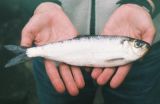(Press-News.org) Scientists at the Academy of Finland's Centre of Excellence in Computational Inference Research have developed novel computational methods that have yielded essential knowledge of how hospital-acquired bacteria spread and develop. These new methods, based on randomised algorithms, make it possible to analyse extensive genomic data significantly faster and more efficiently than previously. By applying these results, it is possible to better follow hospital-acquired infections in the future, or even fight them in real time.
The new methods are used to develop models of the evolution of bacteria and viruses. "Essential for the evolution of the bacteria that cause hospital-acquired infections is the horizontal gene transfer. It means that several different cell processes transfer genes between the lineages of the same and different species so that the bacterium becomes resistant to antibiotics and the virulence factor rapidly spreads in the population," explains group leader, Professor Jukka Corander. Corander's group is part of the Centre of Excellence in Computational Inference Research.
This so-called recombination of bacteria makes it much more complicated to carry out evolution analyses. To facilitate such analyses, Corander's group in cooperation with researchers from Harvard University and the Wellcome Trust Sanger Institute has developed a number of methods based on smart randomised algorithms. These methods facilitate efficient and reliable analyses of extensive genomic data. With the current, most commonly used computational methods this work would take several months or even several years.
Two of the group's methods have recently been applied by an international study. This study demonstrated that more than half of the genetic variation of the MRSA bacteria (i.e. methicillin-resistant strains of Staphylococcus aureus) is caused by horizontal genomic transfer. This shows that the evolutionary analyses of the strains of bacteria are necessary when investigating the spread of bacteria in a host population. This horizontal variation significantly distorts the results received from normal evolutionary analyses.
"On the basis of the results from these analyses, i.e. the evolutionary variation, we're able to estimate when a certain strain of the MRSA bacterium has entered a country and started to spread to hospitals. This is the first time we have been able to prove that the interplay between the horizontal genomic variation and the mutational genomic variation may vary significantly across geographical locations and even between individual hospitals," Corander says. According to Corander, these insights open up new opportunities for in-depth studies on the spread and variation of MRSA and related causalities.
In another recently published study, Corander's group investigated the origin and evolution of the Enterococcus faecium bacterium that has adapted to survive in hospital environments. By using its analysis methods, the group found out that the forms of the bacteria originate from several independent sources, which is contrary to previous knowledge. In the nuclear genome of hospital strains of E. faecium, fewer signs of horizontal transfer were found than expected. This discovery led to a hypothesis that strains of bacteria that have adapted to survive in hospital environments may become either genetically or ecologically more isolated after horizontal transfer.
MRSA is a globally spread bacterium that is especially troublesome in hospitals. It is resistant to most antibiotics and annually causes the death of tens of thousands of people in the US, for instance. According to cautious estimates, the annual costs incurred by MRSA infections amount to several billion US dollars. In recent years, the E. faecium bacterium has become one of the major causes of hospital-acquired infections and its antibiotic-resistant strains have caused severe hospital epidemics worldwide.
###
The articles have been published in the following scientific journals:
Santiago Castillo-Ramirez, Jukka Corander, Pekka Marttinen, Mona Aldeljawi, William P Hanage, Henrik Westh, Kit Boye, Zeynep Gulay, Stephen D Bentley, Julian Parkhill, Matthew T Holden and Edward J Feil (2012) Phylogeographic variation in recombination rates within a global clone of Methicillin-Resistant Staphylococcus aureus (MRSA) Genome Biology, 13:R126 doi:10.1186/gb-2012-13-12-r126.
http://genomebiology.com/2012/13/12/R126/abstract
Rob J. L. Willems, Janetta Top, Willem van Schaik, Helen Leavis, Marc Bonten, Jukka Sirén, William P Hanage and Jukka Corander (2012) Restricted gene flow among hospital subpopulations of Enterococcus faecium. mBio, 3, e00151-12.
http://mbio.asm.org/content/3/4/e00151-12.full.html#
More information:
Professor Jukka Corander
University of Helsinki
Academy of Finland Communications
Aki Antinkaapo
tel. 358-29-533-5028
firstname.lastname(at)aka.fi END
Computational methods reveal how hospital-acquired bacteria spread
2013-01-16
ELSE PRESS RELEASES FROM THIS DATE:
New UMass Amherst research shows fishways have not helped fish
2013-01-16
AMHERST, Mass. – Despite modern designs intended to allow migratory fish to pass, hydropower dams on major Northeast U.S. waterways, including the Merrimack and Connecticut rivers, have failed to let economically important species such as salmon, shad and river herring reach their spawning grounds, say a team of economists and fish ecologists including Adrian Jordaan of the University of Massachusetts Amherst.
This raises serious questions about the impact of new dams now being planned and constructed on major waterways worldwide, say the researchers in the current ...
Engineer making rechargeable batteries with layered nanomaterials
2013-01-16
MANHATTAN, Kan. -- A Kansas State University researcher is developing more efficient ways to save costs, time and energy when creating nanomaterials and lithium-ion batteries.
Gurpreet Singh, assistant professor of mechanical and nuclear engineering, and his research team have published two recent articles on newer, cheaper and faster methods for creating nanomaterials that can be used for lithium-ion batteries. In the past year, Singh has published eight articles -- five of which involve lithium-ion battery research.
"We are exploring new methods for quick and cost-effective ...
U of T and Harvard study finds growing 'weight extremes' in the developing world
2013-01-16
Obese and overweight people are gaining weight rapidly in low-and middle-income countries while those who are severely undernourished are not experiencing similar weight gains, according to a University of Toronto and Harvard School of Public Health study.
This growing divide may force governments in the developing world to care for people who fall dramatically short on their calorie intake while simultaneously treating health problems associated with obesity, including diabetes and heart disease.
"One might think that as a country grows economically, the majority of ...
Study finds a new culprit for epileptic seizures
2013-01-16
CAMBRIGDE, MA -- Epileptic seizures occur when neurons in the brain become excessively active. However, a new study from MIT neuroscientists suggests that some seizures may originate in non-neuronal cells known as glia, which were long believed to play a mere supporting role in brain function.
In a study of fruit flies, the researchers identified a glial-cell mutation that makes the flies much more prone to epileptic seizures. Mutations in the gene, which influences glial cells' communication with neurons, appear to make neurons much more excitable. That excitability ...
New Antarctic geological timeline aids future sea-level predictions
2013-01-16
Radiocarbon dates of tiny fossilised marine animals found in Antarctica's seabed sediments offer new clues about the recent rapid ice loss from the West Antarctic Ice Sheet and help scientists make better predictions about future sea-level rise. This region of the icy continent is thought to be vulnerable to regional climate warming and changes in ocean circulation.
Reporting this month in the journal Geology a team of researchers from British Antarctic Survey (BAS), the Alfred Wegener Institute for Polar and Marine Research (AWI) and the University of Tromsø presents ...
Yaks are back
2013-01-16
NEW YORK (January 16, 2013) — A team of American and Chinese conservationists from the Wildlife Conservation Society and University of Montana recently counted nearly 1,000 wild yaks from a remote area of the Tibetan-Qinghai Plateau. The finding may indicate a comeback for this species, which was decimated by overhunting in the mid 20th century.
The team counted 990 yaks in a rugged area called Hoh Xil – a national nature reserve nearly the size of West Virginia but devoid of people. The remote region lies in the mid-eastern Tibetan-Himalayan highlands, home to some ...
Researchers develop integrated dual-mode active and passive infrared camera
2013-01-16
High-performance infrared cameras are crucial for civilian and military applications such as night-vision goggles and search-and-rescue operations. Existing cameras usually fall into one of two types: active cameras, which use an invisible infrared source to illuminate the scene, usually in the near or short-wavelength infrared; and passive cameras, which detect the thermal radiation given off by a warm object, typically in the mid- or long-wavelength infrared, without the need for any illumination. Both camera types have advantages and disadvantages in the field.
Integrating ...
Mathematical breakthrough sets out rules for more effective teleportation
2013-01-16
For the last ten years, theoretical physicists have shown that the intense connections generated between particles as established in the quantum law of 'entanglement' may hold the key to eventual teleportation of quantum information.
Now, for the first time, researchers have worked out how entanglement could be 'recycled' to increase the efficiency of these connections. Published in the journal Physical Review Letters, the result could conceivably take us a step closer to sci-fi style teleportation in the future, although this research is purely theoretical in nature. ...
New surfaces repel most known liquids
2013-01-16
In an advance toward stain-proof, spill-proof clothing, protective garments and other products that shrug off virtually every liquid — from blood and ketchup to concentrated acids — scientists are reporting development of new "superomniphobic" surfaces. Their report on surfaces that display extreme repellency to two families of liquids — Newtonian and non-Newtonian liquids — appears in the Journal of the American Chemical Society.
Anish Tuteja and colleagues point out that scientists have previously reported "omniphobic" surfaces, the term meaning that such surfaces can ...
Growing up bilingual
2013-01-16
This press release is available in French.
Montreal, January 16, 2013 – Language mixing – using elements from two languages in the same sentence – is frequent among bilingual parents and could pose a challenge for vocabulary acquisition by one- and two-year-old children, according to a new study by Concordia University psychology professor Krista Byers-Heinlein. Those results are likely temporary, however, and are often counterbalanced by cognitive advantages afforded to children raised in a bilingual environment.
With immigration and international mobility on the ...

